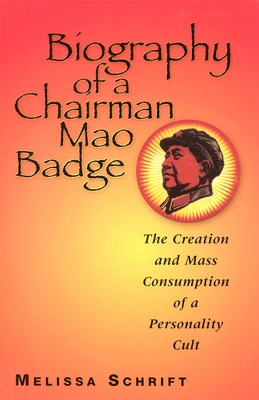With the Great Proletarian Cultural Revolution in 1966, the regime of Chairman Mao Zedong launched a propaganda campaign aimed at disseminating inspiring images of the chairman to a skeptical populace. Thus was born the ""Mao badge,"" a political icon in the form of a pin that was widely distributed to create, sustain, and inflate the Mao personality cult during the Cultural Revolution (1966-1976). Scholars estimate that over two billion Mao badges, featuring over fifty thousand different designs and themes, were produced. As China now enters an era in which people can more openly express their views about the Cultural Revolution, these icons have taken on new meanings, and people are wearing and talking about them in subversive ways. Melissa Schrift suggests that the badges developed ""lives"" that far surpass the intentions of their creators, as the Chinese ironically commodified them, both during the Cultural Revolution and today. During the Mao years, people wore the objects to symbolize their unquestioned loyalty to Mao. Yet even then many Chinese subverted the badges' symbolic meaning. Using them in socially approved rituals, they gained a measure of political credibility that masked their practice of prohibited customary rites. Biography of a Chairman Mao Badge is a work of cultural history that contributes to our understanding not only of Chinese society but, more generally, of strategies people employ in responding to and transforming the meaning of propaganda campaigns and symbols.
- ISBN13 9780813529363
- Publish Date 30 June 2001 (first published 1 June 2001)
- Publish Status Inactive
- Out of Print 2 July 2021
- Publish Country US
- Imprint Rutgers University Press
- Format Hardcover
- Pages 192
- Language English
